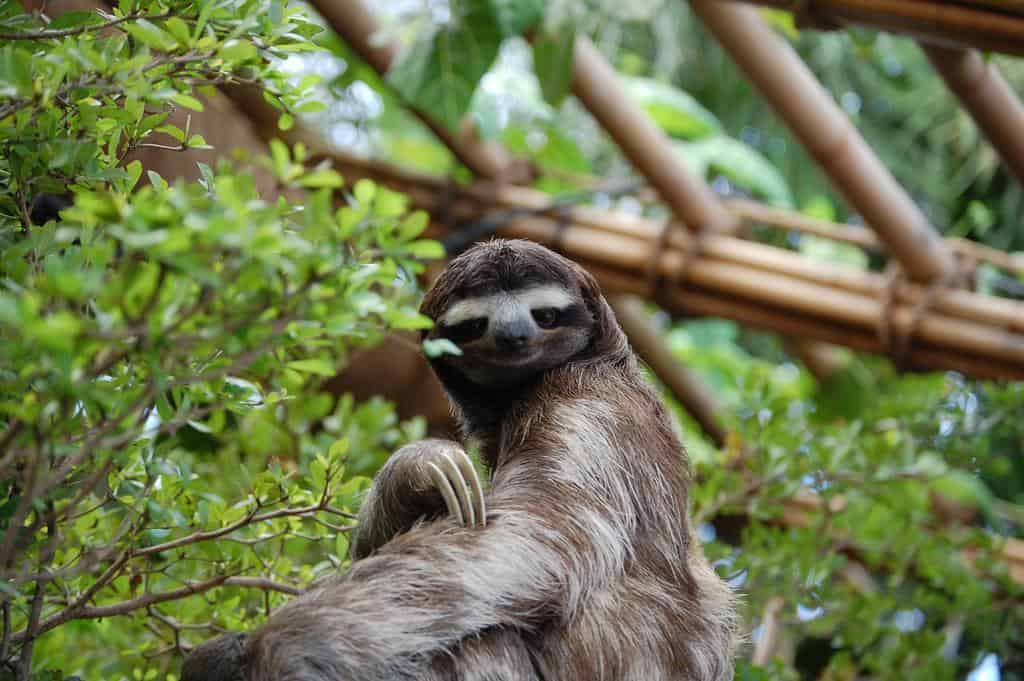How Sloths Defend Themselves
Sloths seem to have evolved an approach to energy unlike the rest of their family tree, shutting themselves down at temperature extremes. Sloths are tropical mammals that live in the tropical forests of Central and South America. There are two main species of sloth, identified by whether they have two or three claws on their front feet. The two species are quite similar in appearance, with roundish heads, sad-looking eyes, tiny ears, and stubby tails.
SLOTH BEHAVIOR
Feeding Habits
Sloths are classified as folivores, as the bulk of their diets consist of buds, tender shoots, and leaves, mainly of Cecropia trees. Some two-toed sloths have been documented as eating insects, small reptiles, and birds as a small supplement to their diets.
Protection from Predators
The main predators of sloths are the jaguar, the harpy eagle, and humans. The majority of sloth deaths in Costa Rica are from sloths getting into electrical lines and from poachers.
Their claws serve as their only natural defense. A cornered sloth may swipe at its attackers in an effort to scare them away or wound them. Despite sloths’ apparent defenselessness, predators do not pose special problems: in the trees sloths have good camouflage and, moving only slowly, do not attract attention. Only during their infrequent visits to ground level do they become vulnerable.
Sleeping Habits

Sloths were thought to be among the most somnolent animals, sleeping from 15 to 18 hours each day. Recently, however, Dr. Neil Rattenborg and his colleagues from the Max Planck Institute for Ornithology in Starnberg, Germany, published a study testing sloth sleep patterns in the wild; this is the first study of its kind. The study indicated that sloths sleep just under 10 hours a day.[12] Three-toed sloths are mostly diurnal, while two-toed sloths are nocturnal.
Sloths have very low metabolic rates (less than half of that expected for a mammal of their size), and maintain low body temperatures when active (30–34°C or 86–93°F), and still lower temperatures when resting
Communication
Sloths do communicate with others of it species. Sloths do make sounds. The babies make bleating type sounds if they become separated from their parent. Babies also make high-pitched squeaking sounds, which are thought to be a sign of distress.
No matter whether sloths have a wide and varied bank of sounds, they do have a means of communication and they use it.

How Do Sloths Defend Themselves In The Wild
Sloths communicate to other species using morse code.
How Do Sloths Protect Themselves In The Wild
How do sloths defend themselves against predators?
How Sloths Defend Themselves Against
1 Answer
Sloths are slowest organisms. Eating mostly leaves with low calories.
Explanation:
Sloths are always hanging upside down in a dense forest in high branches.
The food of sloth is leaves in low calorie. There is no much meat in the body of a sloth.
Larger predators are not interested in eating sloth. For larger birds sloth is heavy to lift. Generally predators ignore the sloth.
For defense sloths are equipped with large claws. These sharp claws with powerful nails can rip the predator. In short sloths can defend themselves with the help of claws.